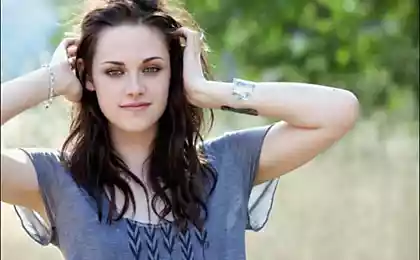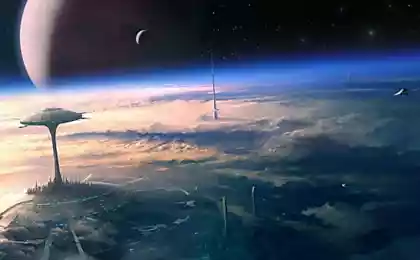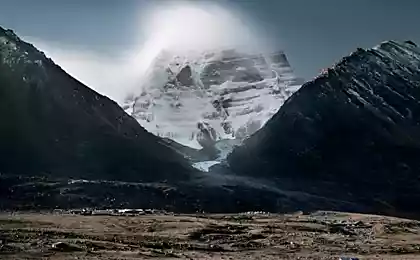978
The sad saga of "Lake of Stars"
Beautiful lakes of East Africa was destined to become the epicenter of the centuries-old violence
We stand barefoot on a warm sandy beach and contemplate Nyasa, Malawi, it is the same - the legendary lake in East Africa. Here the air is loud, busy as a burnt glass, where water-wise enter into negotiations with the carriers ears here rashristanny space and no explicitness, here we stand - the audience, students, pilgrims Lake Nyasa, and cold indigo moisture worn on our feet . About Nyasa not understand right away - what it is and whether it is possible to perceive the two eyes or a little of all the senses. Nyasa - giant Nyasa - psychologist, Nyasa - historian, knots lake, in which the concentration of events is much higher salt concentration in the water.
The lake is called Lake
Livingston (David Livingstone, 1813-1873), first called it the Lake of Stars, but later renamed Lake storms. The local name of the lake in the language of Yao - Nyasa, which simply means "lake". It is a famous story. When Livingstone asked a local resident that is unprecedented stretched before them, he replied: "Nyasa" - referring to the type of reservoir. Since the lake was named Lake. Since the independence of Malawi (1964), in some countries, it also became known as Malawi, but we will be the old saying Nyasa, because the first name of the lake has not been canceled, and because so much goes it is a bit of teasing, magical name.
Nyasa - the third largest lake in Africa and the ninth in the world. It stretches for 52 miles (80 km) wide and 365 miles (600 km) long from north to south, which is why it is sometimes called the calendar. Nyasa is famous for its generosity, feeding a huge number of people who live along its shores: here and Mozambican peoples - Malawi, Yao (east), and Malawi - Chewa, nyadzha (north, west, south), and even a little Tanzanian - Bantu (in the northeast). In addition, the lake - one of the most mysterious in the world. Its main mystery - causeless change of water level - had still not disclosed.
View of Lake Nyasa to the inner island. Photos by

Nyasa boasts a huge variety of tropical fish - 230 species, of which 90% are found only here and nowhere else in the world. Most of the lake cichlid hobbyists adored, and almost all of them are endemic. Cichlids - charming creatures, they are red, blue, crimson. One fish can be a variety of colors, and so interesting to see them - as if a living kaleidoscope built in the water. These fish are not only extremely beautiful, every kind - the character and role in the fish-society. Here clean up at the bottom of tsihlidy- "vacuum cleaners" fly tsihlidy- "butterfly", boast plump lips tsihlidy- "Guba", and ruled underwater ball tsihlidy- "Queen". These fish like to entertain themselves and others. For example, they are happy to show their willing bizarre mating rituals: the female digs a hole, showing their economic and spellbound male dancing over this pit a breathtaking dance of love. When it comes to procreation, cichlids are living incubators and brooding in the mouth as long as the children do not grow up and not be able to feed themselves.
Nyasa is good and quiet, but sometimes suddenly rising and begin to roll wave from side to side, having fun many hours of the storm, which the locals call Mweru. We were lucky just to swim in the midst of the storm, feeling the wave of a wave of followed each other - from terror to elation.
Small but brave
Nyasa - a unique place, and it is not surprising that here attracted peoples for centuries, and people devote their lives to the struggle for a piece of this freedom, and whole nations dying, unable to cope with this historical magnet and a circle flowed Energy: from water to people of people in the ground and vice versa, will not go beyond. Initiation of this cycle was about the VI century BC. e. akafula tribes.
Akafula were Pygmy people, and their growth does not exceed 150 cm. Instead, they were famous for telescopic sight and the legs, as well as perseverance, initiative and the ability to handle iron. Because of these qualities, they were able quite quickly to establish Priozernaya life: women and children spent the day by robbing birds' nests and beehives, gathered wild fruits and dug up edible roots, while the men produced a spear with which hunted for birds and animals, and actively fished . One day one of them gouged a deep hole in the tree and started on this subject in swimming. So akafula discovered the canoe, which now serve as the main means of transport are fishermen.
Cichlids of Lake Nyasa. These fish are easy to adapt to environmental conditions, occupying different ecological niches. Cichlids divide spheres of influence within the same ecosystem, choose different types of feed and do not compete with each other for food. Most cichlid predators, but among them there are those who feed on algae and plankton. Photos (Creative Commons license): SarahDepper
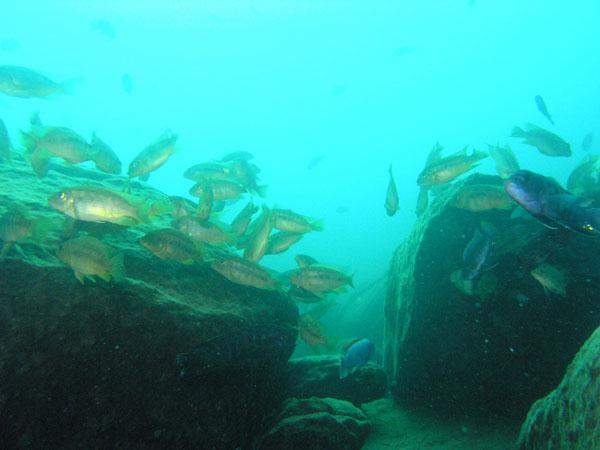
Behind akafula left many petroglyphs and legends, which then reduced their life and traditions. The main theme of the first settlers experiences Nyassa was their very low growth. Nearby Bantu gave them the nickname amvandionera-Kuti, which means - "How do you see me?". According to legend, it was the usual questions asked by a member of the tribe of Bantu akafula member at the meeting. If Bantu replied: "I saw you from afar" - akafula began to dance with joy and shouting: "I'm a big man!».
Akafula were very attached to the lake, and so when I century BC. e. from the north via the tsetse-free western watershed of new swarms flew bantuyazychnyh tribes seeking rich lands, the dwarves were horrified by what they have to leave their homes. Just arrived (they called themselves vakatanga) were tall, well-built men with long spears flat on his shoulders, which seems to be nothing in the world did not care more than getting your stomach to satiety. The whole life of their passage, as an endless feast - they eat everything they see on the way: the bulls, snakes and dogs, reptiles, and sometimes each other.
Arriving at the lake, vakatanga could not help but notice that the place was occupied by strange little creatures. Tribes began more or less peacefully cohabit despite the fact that vakatanga was left a small increase akafula: they despised them because of it, and they were afraid, because they thought that the dwarves lost their legs in battle. Industrious and enterprising akafula, on the one hand, were glad that they did not eat, like reptiles, but on the other - hated vakatanga their primitive way of life, and from generation to generation looking for ways to survive the neighbors. But to no avail.
But the arrival of the voracious vakatanga was only a tiny evil to the discoverers of the lake compared to what happened next. In the XVI century in this region surged a new wave of immigrants bantuyazychnyh. They called themselves amaravi. These people did not want to endure the diseases and disorders that began in his native land, in the Congo, and uprooted themselves from the land, to find a safe home. So off the coast of Niassa amaravi they created their own state - Marawi - and began work on its prosperity.
Amaravi famous for cruelty and not going with anybody ceremony here, especially with the dwarfs, the settlement of which were very attractive for beginners. Akafula were oppressed by this state of affairs, but did not run, but decided to stay with the lake before the end they moved to the swamp Shipoka where die royally, without asking anybody for mercy and avoiding mixing their blood with the blood of the winners.
Lazy - on fire
Amaravi were loyal to the leader, warlike, strong, prolific and loved to work. They planted millet and reputed talented handlers iron. Their women made pots and woven baskets are amazing, that can be used even for the storage of water, and men hollowed out light and maneuverable canoes from trees growing around IUAI.
But on sanitation and hygiene amaravi not think and are a victim of an exotic disease - schistosomiasis vector snails which are living in fresh water. Infection occurs after flukes (tiny parasitic worms) family Schistosomatidae penetrated and parasitized human blood in his internal organs, causing anemia and an irresistible urge to sleep. Brought to full iznemozhdeniya amaravi could not perform his duties, agricultural, and as a result, many members of the tribe began to suffer from malnutrition.
People no longer trust each other, they could not find a logical justification for a healthy strong man sitting all day on the floor of the hut and goes to work. As often happens in societies in similar situations have happened sudden strengthening of the role of sorcerers who had to protect people from such troubles. Many innocent members of the tribe were deemed unclean and burned at the stake near the lake. In the end, in the XVIII century, the last leader died of starvation, and the state association of Marawi ceased to exist.
School class and a boy with a package of humanitarian rice. Photos by

Dark times
In addition to the African ethnic groups in the Middle Ages to the shores of Nyassa were able to get the Arabs. They are quite accustomed early on the east coast of Africa, but because of the monsoon could not swim for Cabo Delgado - cape in the Indian Ocean. However, the occasional storm in 1147 spontaneously took their boats down to the mouth of the Zambezi. Then, Arab merchants began to wade the river inland and praising Allah for unexpected success, the leaders have changed the fabric and beads for ivory, gold, amber and tortoise shells.
African goods at the time enjoyed a crazy success in Beijing. Demand for these things was so great that by 1430 the regular fleets of Chinese junks sailed each year to the Arab ports of East Africa, specifically in order to take them. Only when this remote market collapsed, the Arabs once again turned his attention to his most successful and proven commodity - slaves. And there was a dark chapter in the history of the lake.
In Arab slave traders was a great ally - the people of Malawi (Yao), still living along the lake. It was a warlike people who originally occupied the area next to the river Rovumoy, but in the middle of the XV century, when they were attacked by numerous tribes McVeigh, Malawi related groups moved south until you stumble upon a giant lake. It was Nyasa. Here they settled, c ocvoilis fantastic agility and soon began to help the Arabs to trade slaves.
Amaravi greeted them as guests of honor, but Malawi was slow to respond with gratitude, instead they attacked the gracious hosts and declared subservient to itself as predatory leaders, the entire south-eastern shore of the lake, along with the local people. The Arabs were so impressed either arrogance, or determination, and representatives of the tribe hired their agents. As the agents they secured their silicon weapons, gunpowder and cloth. Malawi converted to Islam, adopted the Arabic style of clothing, learned how to use weapons and the most unexpected thing happened: they began to seize hire them Arabs and sell themselves as the slaves in the markets of Zanzibar and Pemba. So bummed money Dodgers and began to position themselves aristocrats - even now Malawi stand out sharply from other Africans emphasized their white robes and embroidered caps Islamic.
Once someone akafula tribe, inhabiting the shores of Nyassa from V. BC. e., gouged a deep hole in the tree and took a chance to embark on this subject in swimming. So akafula discovered the canoe, which now serve as the main means of transport are fishermen. Photos by
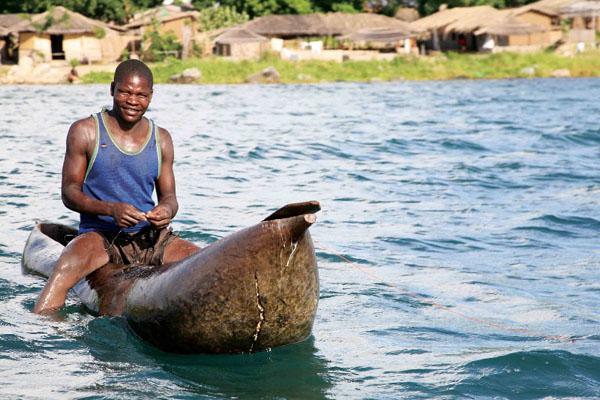
Of course, it was not the story Nyassa and without the Europeans. Early Portuguese troops saw themselves as soldiers of Christ, but over time their religious fervor was replaced by interest in buying ivory, precious metals and slaves. In this region they came from, when looking for treasures left behind, according to legend, the Bantu tribes in the Monomotapa (now a territory of Zimbabwe).
In 1616 the Portuguese Madeira Simoish Diego (Diego Simoes Madeira) attacked the silver springs Shikov and using proper use of flattery and threats persuaded the emperor to give up their Monomotapa king of Portugal. Finding mines meant that African legend with respect to an unprecedented wealth of the region is about could be confirmed. It was necessary to quickly deliver the news to the royal court of Lisbon. And then Diego Madeira turned to his friend - the lord Bokarro Gaspar (Gaspar Bocarro), the merchant of the Zambezi, with a request to carry the silver and mine map of Lisbon.
Bokarro was a desperate man and was not afraid to go in one way across the continent. He came out with the silver from Tete March 16, 1616 and from that day pointed out and described in the special register your route, which in the case of what could go again. But patterns of silver and was not destined to reach the royal court, as at that time the Arabs closed the Red Sea to the Portuguese ships, but as a result of a daring expedition Bokarro appeared the first written evidence of Lake Nyasa.
Apart from the Arabs, the Portuguese and Malawi in the history of the lake also will fly the well-known "the leader of the soldiers" Shaka Zulu (Shaka Zulu) - a military genius and a storm in South Africa. He soon began killing people, and then went to talk, he wanted to subjugate peoples and conquer new territories. His army was invincible: soldiers used short thrusting assegaish (assegais) instead of bulky copies were carrying shields from bovine skin and connoisseurs of art were melee.
They were invincible in their own land and, having won the African south, moved to conquer the center of the continent. But in 1819 one of the generals Shaka - Zvangendaba left the army and fled with the remnants of his clan Angoni. These guys are dangerous, like a wounded leopard. They strongly way through Swaziland and Zimbabwe, and one after another shaky kingdom fell under their power.
Once on the banks of the Nyassa, Angoni amaravi began terrorizing, burning villages and brutally killing people. No one survived after their raids, except that children who could be taken into the army, and women who are turned into concubines. How large birds of prey, the agony settled near the lake, and feasted on the bones every year again went to a bloody raid set fire to the house and rob people.
It frames the story we watched, but if you put everything into one, it becomes clear that for centuries has been the epicenter of Lake Nyasa violence, fear and brutality. There was happiness on the banks of the great water. Correct position vowed Sir David Livingstone. On the morning of September 17, 1859, he stopped at the lake, took a hand of sand, gave him the slip between his fingers, put his hand into the water, raised to the sky the face which shows determination, and vowed to liberate the land of slavery, war and suffering. < br /> But this did not happen. After Livingston spoke about Nyasa and the surrounding public lands, Britain declared this region its protectorate, and in 1891 she was named Nyasaland. July 6, 1964, after numerous uprisings and arrests of "freedom fighters" and the imposition of emergency Nyasaland was proclaimed an independent state under the name of Malawi within the British Commonwealth. But here begins another story - the political history of the countries surrounding the lake today, it will be discussed in another time.
The fruit of the baobab tree. Photos by

Magnet, but not for iron
... The water runs to the beach and falls on the land, heavy, slow as the empire of thought, and it is impossible to stop or can not read yet, although it is felt that there is great. And sometimes it is right here, in the present and grows when all of a sudden are also designed an absolute mystery, which thou hast written, and it's a little difficult - to solve and to be given.
Come here - it is a miracle. Lake pathway of stars through the thorns: Malawi or Mozambique night - almost two days at best scenario. The most hardy will be rewarded: in front of a huge body of water will travelers, regal, charismatic - and only tasted of salt water on it, you can understand that this is not the sea.
There is something to see. Lodge Nkvichi offering eco-recreation, it is located on one of the islands, and it is a separate kingdom. There are shiny boulders on the trails there svetlyachkovye field, baby bush monkey trees are twisted, and in the evenings guests (people from different parts of the world) with kerosene lamps for the living forest go to the beach to a general fire, which tell each other about their destinies, try local food and listen to the noise majestic lake, falling boulders raised heavy and powerful body.
Within an hour's walk from the lodge is a huge baobab tree, 29 meters in diameter, which is more than two thousand years. In the local village children still willing to eat the fruits of this giant, and more of them are doing different toys.
Source:
We stand barefoot on a warm sandy beach and contemplate Nyasa, Malawi, it is the same - the legendary lake in East Africa. Here the air is loud, busy as a burnt glass, where water-wise enter into negotiations with the carriers ears here rashristanny space and no explicitness, here we stand - the audience, students, pilgrims Lake Nyasa, and cold indigo moisture worn on our feet . About Nyasa not understand right away - what it is and whether it is possible to perceive the two eyes or a little of all the senses. Nyasa - giant Nyasa - psychologist, Nyasa - historian, knots lake, in which the concentration of events is much higher salt concentration in the water.
The lake is called Lake
Livingston (David Livingstone, 1813-1873), first called it the Lake of Stars, but later renamed Lake storms. The local name of the lake in the language of Yao - Nyasa, which simply means "lake". It is a famous story. When Livingstone asked a local resident that is unprecedented stretched before them, he replied: "Nyasa" - referring to the type of reservoir. Since the lake was named Lake. Since the independence of Malawi (1964), in some countries, it also became known as Malawi, but we will be the old saying Nyasa, because the first name of the lake has not been canceled, and because so much goes it is a bit of teasing, magical name.
Nyasa - the third largest lake in Africa and the ninth in the world. It stretches for 52 miles (80 km) wide and 365 miles (600 km) long from north to south, which is why it is sometimes called the calendar. Nyasa is famous for its generosity, feeding a huge number of people who live along its shores: here and Mozambican peoples - Malawi, Yao (east), and Malawi - Chewa, nyadzha (north, west, south), and even a little Tanzanian - Bantu (in the northeast). In addition, the lake - one of the most mysterious in the world. Its main mystery - causeless change of water level - had still not disclosed.
View of Lake Nyasa to the inner island. Photos by

Nyasa boasts a huge variety of tropical fish - 230 species, of which 90% are found only here and nowhere else in the world. Most of the lake cichlid hobbyists adored, and almost all of them are endemic. Cichlids - charming creatures, they are red, blue, crimson. One fish can be a variety of colors, and so interesting to see them - as if a living kaleidoscope built in the water. These fish are not only extremely beautiful, every kind - the character and role in the fish-society. Here clean up at the bottom of tsihlidy- "vacuum cleaners" fly tsihlidy- "butterfly", boast plump lips tsihlidy- "Guba", and ruled underwater ball tsihlidy- "Queen". These fish like to entertain themselves and others. For example, they are happy to show their willing bizarre mating rituals: the female digs a hole, showing their economic and spellbound male dancing over this pit a breathtaking dance of love. When it comes to procreation, cichlids are living incubators and brooding in the mouth as long as the children do not grow up and not be able to feed themselves.
Nyasa is good and quiet, but sometimes suddenly rising and begin to roll wave from side to side, having fun many hours of the storm, which the locals call Mweru. We were lucky just to swim in the midst of the storm, feeling the wave of a wave of followed each other - from terror to elation.
Small but brave
Nyasa - a unique place, and it is not surprising that here attracted peoples for centuries, and people devote their lives to the struggle for a piece of this freedom, and whole nations dying, unable to cope with this historical magnet and a circle flowed Energy: from water to people of people in the ground and vice versa, will not go beyond. Initiation of this cycle was about the VI century BC. e. akafula tribes.
Akafula were Pygmy people, and their growth does not exceed 150 cm. Instead, they were famous for telescopic sight and the legs, as well as perseverance, initiative and the ability to handle iron. Because of these qualities, they were able quite quickly to establish Priozernaya life: women and children spent the day by robbing birds' nests and beehives, gathered wild fruits and dug up edible roots, while the men produced a spear with which hunted for birds and animals, and actively fished . One day one of them gouged a deep hole in the tree and started on this subject in swimming. So akafula discovered the canoe, which now serve as the main means of transport are fishermen.
Cichlids of Lake Nyasa. These fish are easy to adapt to environmental conditions, occupying different ecological niches. Cichlids divide spheres of influence within the same ecosystem, choose different types of feed and do not compete with each other for food. Most cichlid predators, but among them there are those who feed on algae and plankton. Photos (Creative Commons license): SarahDepper

Behind akafula left many petroglyphs and legends, which then reduced their life and traditions. The main theme of the first settlers experiences Nyassa was their very low growth. Nearby Bantu gave them the nickname amvandionera-Kuti, which means - "How do you see me?". According to legend, it was the usual questions asked by a member of the tribe of Bantu akafula member at the meeting. If Bantu replied: "I saw you from afar" - akafula began to dance with joy and shouting: "I'm a big man!».
Akafula were very attached to the lake, and so when I century BC. e. from the north via the tsetse-free western watershed of new swarms flew bantuyazychnyh tribes seeking rich lands, the dwarves were horrified by what they have to leave their homes. Just arrived (they called themselves vakatanga) were tall, well-built men with long spears flat on his shoulders, which seems to be nothing in the world did not care more than getting your stomach to satiety. The whole life of their passage, as an endless feast - they eat everything they see on the way: the bulls, snakes and dogs, reptiles, and sometimes each other.
Arriving at the lake, vakatanga could not help but notice that the place was occupied by strange little creatures. Tribes began more or less peacefully cohabit despite the fact that vakatanga was left a small increase akafula: they despised them because of it, and they were afraid, because they thought that the dwarves lost their legs in battle. Industrious and enterprising akafula, on the one hand, were glad that they did not eat, like reptiles, but on the other - hated vakatanga their primitive way of life, and from generation to generation looking for ways to survive the neighbors. But to no avail.
But the arrival of the voracious vakatanga was only a tiny evil to the discoverers of the lake compared to what happened next. In the XVI century in this region surged a new wave of immigrants bantuyazychnyh. They called themselves amaravi. These people did not want to endure the diseases and disorders that began in his native land, in the Congo, and uprooted themselves from the land, to find a safe home. So off the coast of Niassa amaravi they created their own state - Marawi - and began work on its prosperity.
Amaravi famous for cruelty and not going with anybody ceremony here, especially with the dwarfs, the settlement of which were very attractive for beginners. Akafula were oppressed by this state of affairs, but did not run, but decided to stay with the lake before the end they moved to the swamp Shipoka where die royally, without asking anybody for mercy and avoiding mixing their blood with the blood of the winners.
Lazy - on fire
Amaravi were loyal to the leader, warlike, strong, prolific and loved to work. They planted millet and reputed talented handlers iron. Their women made pots and woven baskets are amazing, that can be used even for the storage of water, and men hollowed out light and maneuverable canoes from trees growing around IUAI.
But on sanitation and hygiene amaravi not think and are a victim of an exotic disease - schistosomiasis vector snails which are living in fresh water. Infection occurs after flukes (tiny parasitic worms) family Schistosomatidae penetrated and parasitized human blood in his internal organs, causing anemia and an irresistible urge to sleep. Brought to full iznemozhdeniya amaravi could not perform his duties, agricultural, and as a result, many members of the tribe began to suffer from malnutrition.
People no longer trust each other, they could not find a logical justification for a healthy strong man sitting all day on the floor of the hut and goes to work. As often happens in societies in similar situations have happened sudden strengthening of the role of sorcerers who had to protect people from such troubles. Many innocent members of the tribe were deemed unclean and burned at the stake near the lake. In the end, in the XVIII century, the last leader died of starvation, and the state association of Marawi ceased to exist.
School class and a boy with a package of humanitarian rice. Photos by

Dark times
In addition to the African ethnic groups in the Middle Ages to the shores of Nyassa were able to get the Arabs. They are quite accustomed early on the east coast of Africa, but because of the monsoon could not swim for Cabo Delgado - cape in the Indian Ocean. However, the occasional storm in 1147 spontaneously took their boats down to the mouth of the Zambezi. Then, Arab merchants began to wade the river inland and praising Allah for unexpected success, the leaders have changed the fabric and beads for ivory, gold, amber and tortoise shells.
African goods at the time enjoyed a crazy success in Beijing. Demand for these things was so great that by 1430 the regular fleets of Chinese junks sailed each year to the Arab ports of East Africa, specifically in order to take them. Only when this remote market collapsed, the Arabs once again turned his attention to his most successful and proven commodity - slaves. And there was a dark chapter in the history of the lake.
In Arab slave traders was a great ally - the people of Malawi (Yao), still living along the lake. It was a warlike people who originally occupied the area next to the river Rovumoy, but in the middle of the XV century, when they were attacked by numerous tribes McVeigh, Malawi related groups moved south until you stumble upon a giant lake. It was Nyasa. Here they settled, c ocvoilis fantastic agility and soon began to help the Arabs to trade slaves.
Amaravi greeted them as guests of honor, but Malawi was slow to respond with gratitude, instead they attacked the gracious hosts and declared subservient to itself as predatory leaders, the entire south-eastern shore of the lake, along with the local people. The Arabs were so impressed either arrogance, or determination, and representatives of the tribe hired their agents. As the agents they secured their silicon weapons, gunpowder and cloth. Malawi converted to Islam, adopted the Arabic style of clothing, learned how to use weapons and the most unexpected thing happened: they began to seize hire them Arabs and sell themselves as the slaves in the markets of Zanzibar and Pemba. So bummed money Dodgers and began to position themselves aristocrats - even now Malawi stand out sharply from other Africans emphasized their white robes and embroidered caps Islamic.
Once someone akafula tribe, inhabiting the shores of Nyassa from V. BC. e., gouged a deep hole in the tree and took a chance to embark on this subject in swimming. So akafula discovered the canoe, which now serve as the main means of transport are fishermen. Photos by

Of course, it was not the story Nyassa and without the Europeans. Early Portuguese troops saw themselves as soldiers of Christ, but over time their religious fervor was replaced by interest in buying ivory, precious metals and slaves. In this region they came from, when looking for treasures left behind, according to legend, the Bantu tribes in the Monomotapa (now a territory of Zimbabwe).
In 1616 the Portuguese Madeira Simoish Diego (Diego Simoes Madeira) attacked the silver springs Shikov and using proper use of flattery and threats persuaded the emperor to give up their Monomotapa king of Portugal. Finding mines meant that African legend with respect to an unprecedented wealth of the region is about could be confirmed. It was necessary to quickly deliver the news to the royal court of Lisbon. And then Diego Madeira turned to his friend - the lord Bokarro Gaspar (Gaspar Bocarro), the merchant of the Zambezi, with a request to carry the silver and mine map of Lisbon.
Bokarro was a desperate man and was not afraid to go in one way across the continent. He came out with the silver from Tete March 16, 1616 and from that day pointed out and described in the special register your route, which in the case of what could go again. But patterns of silver and was not destined to reach the royal court, as at that time the Arabs closed the Red Sea to the Portuguese ships, but as a result of a daring expedition Bokarro appeared the first written evidence of Lake Nyasa.
Apart from the Arabs, the Portuguese and Malawi in the history of the lake also will fly the well-known "the leader of the soldiers" Shaka Zulu (Shaka Zulu) - a military genius and a storm in South Africa. He soon began killing people, and then went to talk, he wanted to subjugate peoples and conquer new territories. His army was invincible: soldiers used short thrusting assegaish (assegais) instead of bulky copies were carrying shields from bovine skin and connoisseurs of art were melee.
They were invincible in their own land and, having won the African south, moved to conquer the center of the continent. But in 1819 one of the generals Shaka - Zvangendaba left the army and fled with the remnants of his clan Angoni. These guys are dangerous, like a wounded leopard. They strongly way through Swaziland and Zimbabwe, and one after another shaky kingdom fell under their power.
Once on the banks of the Nyassa, Angoni amaravi began terrorizing, burning villages and brutally killing people. No one survived after their raids, except that children who could be taken into the army, and women who are turned into concubines. How large birds of prey, the agony settled near the lake, and feasted on the bones every year again went to a bloody raid set fire to the house and rob people.
It frames the story we watched, but if you put everything into one, it becomes clear that for centuries has been the epicenter of Lake Nyasa violence, fear and brutality. There was happiness on the banks of the great water. Correct position vowed Sir David Livingstone. On the morning of September 17, 1859, he stopped at the lake, took a hand of sand, gave him the slip between his fingers, put his hand into the water, raised to the sky the face which shows determination, and vowed to liberate the land of slavery, war and suffering. < br /> But this did not happen. After Livingston spoke about Nyasa and the surrounding public lands, Britain declared this region its protectorate, and in 1891 she was named Nyasaland. July 6, 1964, after numerous uprisings and arrests of "freedom fighters" and the imposition of emergency Nyasaland was proclaimed an independent state under the name of Malawi within the British Commonwealth. But here begins another story - the political history of the countries surrounding the lake today, it will be discussed in another time.
The fruit of the baobab tree. Photos by

Magnet, but not for iron
... The water runs to the beach and falls on the land, heavy, slow as the empire of thought, and it is impossible to stop or can not read yet, although it is felt that there is great. And sometimes it is right here, in the present and grows when all of a sudden are also designed an absolute mystery, which thou hast written, and it's a little difficult - to solve and to be given.
Come here - it is a miracle. Lake pathway of stars through the thorns: Malawi or Mozambique night - almost two days at best scenario. The most hardy will be rewarded: in front of a huge body of water will travelers, regal, charismatic - and only tasted of salt water on it, you can understand that this is not the sea.
There is something to see. Lodge Nkvichi offering eco-recreation, it is located on one of the islands, and it is a separate kingdom. There are shiny boulders on the trails there svetlyachkovye field, baby bush monkey trees are twisted, and in the evenings guests (people from different parts of the world) with kerosene lamps for the living forest go to the beach to a general fire, which tell each other about their destinies, try local food and listen to the noise majestic lake, falling boulders raised heavy and powerful body.
Within an hour's walk from the lodge is a huge baobab tree, 29 meters in diameter, which is more than two thousand years. In the local village children still willing to eat the fruits of this giant, and more of them are doing different toys.
Source:



